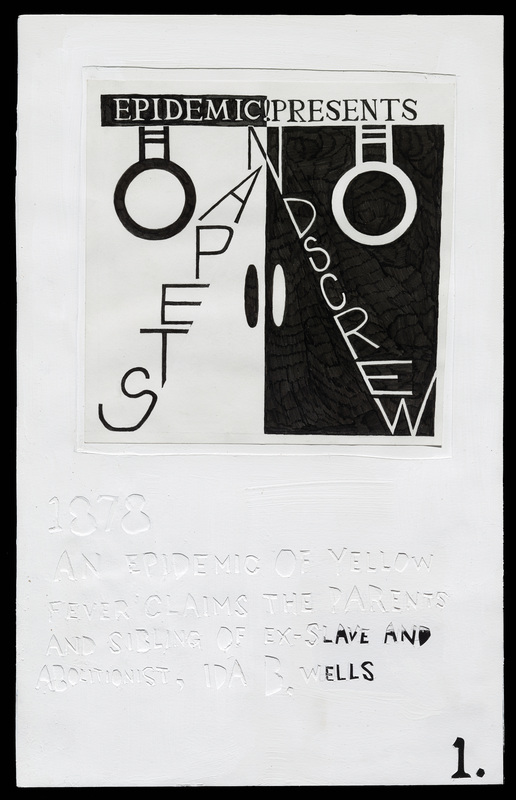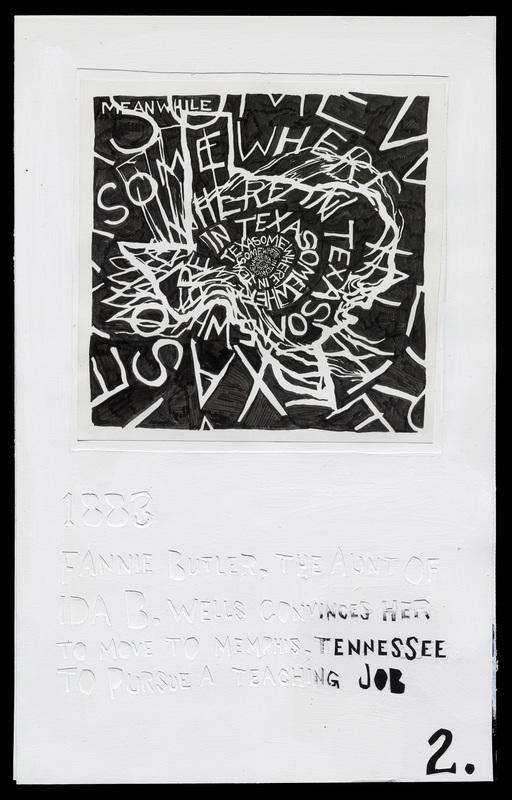VISUAL ART - ISSUE FIVE
Step and Screw
TRENTON DOYLE HANCOCK
With an essay by Valerie Cassel Oliver and an introduction by Kayla E.
* * *

rtistically rigorous comics are just as hard to come by as art that does more than merely reference or re-appropriate comics. Hancock manages to achieve something else entirely with “Step and Screw”. Much of his past work has effectively sought to bridge the gap between these two realms, and this series is his crowning achievement. Without missing a beat, Hancock earnestly engages in zany cartoon irreverence while wrestling with racial violence within and outside of his home town. Whether he’s drawing from art, comics, or deeply personal history, he does justice to these influences, and the result is remarkably singular and incredibly human.
(Excerpt from Kayla E.'s introduction)
* * *

ach of the 30 panels in the series features a narrative text that the artist laboriously excised into mat board and affixed to a pen-and-ink drawing. The two visual modes—text and image—work in tandem to develop multiple storylines that take on new significance in proximity. The title, Step and Screw, is a multilayered wordplay on the caricatured black persona Stepin Fetchit, who happily performs menial or loathsome tasks. So too, Torpedoboy is called upon to screw in a light bulb; however, the mundane task turns into a terrifying predicament as the dangling light bulb morphs into a lynching noose.
(Excerpt from Valerie Cassel Oliver's “The Hunger Within,” an essay from
the catalogue for Trenton Doyle Hancock: Skin and Bones, 20 Years of Drawing)
the catalogue for Trenton Doyle Hancock: Skin and Bones, 20 Years of Drawing)
Images courtesy of James Cohan Gallery and the artist

Born in 1974 and raised in Paris, Texas, Trenton Doyle Hancock is an artist who makes his living writing and painting about fictional beasts and superheroes who he believes are real. He is represented by James Cohan Gallery, NYC and Hales Gallery, London.










